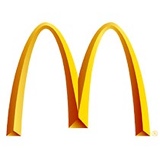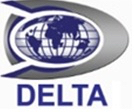Information
-
Audit Title
-
Document No.
-
Prepared by
-
Client
- Marathon Construction Corporation
- Douglas Pipeline Inc.
- TESLA
- AB Towing and Recovery
- Basile Construction Inc.
-
Marathon Personnel
- Amaya, Carlos
- Artis, Salvador
- Balderas, Meliton
- Bergstrom, John
- Braden, Thomas
- Craig, Sam
- Ellis, Joe
- Furby, Blake
- Gonzales , Mario
- Johnson, Ceifus
- Jungier, Gary
- Kasik, Danny
- Kaulfers, Kenneth
- Kost, Dane
- Lanphear, Thomas
- Leon, Francisco
- Martin, Jesse
- Matthews, Tiffany
- McCoy, Tim
- Meyer, Tim
- Molina, Greg
- O'Neil, Jake
- Rodriguez, Rob
- Ruby, Rick
- Ruiz, Manny
- Ruth, Jon
- Sarmenta, John
- Sepulveda, Todd
- Skipper, Keith
- Thornbury, Thomas
- Rick Ruby
-
Basile Personnel
- Adam Houx
- Agustin Licea
- Alan Barralez
- Alberto Hernandez Napoles
- Alejandro Sandoval
- Alfredo Bremmermann
- Alfredo Gutierrez
- Alvaro Betancourt
- Anthony Ribley
- Antonio Reyes-Perez
- Ariel Martinez
- Bernardo Loaiza
- Carlos Brown
- Charles Potter
- Cuitlahuac Mendez
- Daniel Ramirez
- David Alatorre
- David Sanchez
- Eduardo Romero Garcia
- Edwin Arellano
- Emanuel Garcia Reyes
- Enrique Hernandez
- Fernando Martinez
- Fernando Ponce Perez
- Fred Amaya
- Gonzalo Olague
- Hugo Cantero Cruz
- Hugo Robles
- Ismael Cantero
- Jaime Vega Hernandez
- Javier Gomez-Estevez
- Javier Olague
- Jesus Silva Preciado
- Jesus Flores Venancio
- Joaquin Sosa
- Joaquin Macias
- Johan Herrera
- Jonathan Casillas
- Jorge Corrales
- Jose Hurtado
- Joshua Moreno
- Juan Lopez Rios
- Luis Jimenez Garcia
- Luis Penaloza
- Manuel Zamorano
- Marcos Flores
- Miguel Espinoza
- Omar Betancourt
- Raymond Northrop
- Rick Macias
- Robert Underwood
- Roberto Chavez
- Roberto Silva
- Roberto Solis Ambriz
- Ryan Guerrero
- Santiago Cantero Jr
- Sergio Arredondo
- Sergio Espindoal
- Steven Moreno
- Ted Dexheimer
- Timothy Humphrey
- Tomas Jaramillo
- William McDonnal
- Yoan Santamaria
-
Project
-
Location
-
Conducted on
PROGRAM ADMINISTRATION
-
1.1 OSHA POSTINGS
-
1.2 Emergency numbers / contacts posted
-
1.3 Safety manual - CONTRACTOR/CLIENT IIPP
-
1.4 Safety manual -subcontractors
-
1.5 Weekly toolbox talks - CONTRACTOR/CLIENT
-
1.6 Weekly toolbox talks - subcontractors
-
1.7 First aid kits - job trailer
-
1.8 First aid kits - field
-
1.9 Emergency action plan posted / up to date
-
1.10 Fire extinguisher - trailer
HOUSEKEEPING
-
2.1 Work areas orderly
-
2.2 Adequate lighting
-
2.3 Job site free of slips, trips and fall hazards
-
2.4 Stairways / walkways clear
-
2.5 Trash picked up
-
2.6 Break areas orderly
UTILITIES
-
3.1 Insulation intact on cords and wiring
-
3.2 Temporary lighting guarded
-
3.3 Electrical panels labeled HOT and covered
-
3.4 GFCI protection utilized
-
3.5 Underground electrical lines marked
-
3.6 Underground gas lines marked
-
3.7 Lockout procedures utilized
-
3.8 Overhead powerlines in proximity to work
-
3.8.1 Are operators aware of the location
-
3.8.2 Are safe distances being maintained
-
3.8.2a Standby on site
HAND AND POWER EQUIPMENT
-
4.1 Hand tools in good working order
-
4.2 Electrical cords in good working order
-
4.3 All mechanical safeguards in use
-
4.4 Handles not broke / splinter free
MOBILE EQUIPMENT
-
5.1 Breaks, lights, signals and alarms operative
-
5.2 Daily log book filled out
-
5.3 Seat belts worn
-
5.4 Aerial lift - PPE being used
-
5.5 Cranes- swing radius protected - level
-
5.6 Rigging equipment inspected - tag showing
-
5.7 Drip pans in place with no potential for spillage
BARRICADES AND FENCING
-
6.1 Roadways and sidewalks protected
-
6.2 Floor openings planked or barricaded
-
6.3 Wall, roof openings covered or barricaded
-
6.4 Leading edges guarded
EXCAVATION
-
7.0 Is there excavation activity?
-
7.1 Daily Trench inspection performed and documented
-
7.2 Was a soil type determined?
-
7.2.1 What were the results of the physical and visual test?
-
Are excavations being treated at type "C" soil?
-
7.3 What protection method is being used
-
7.3.1 Does the excavation comply with applicable standards? 3/4:1 for Type A, 1:1 for Type B, 1-1/2:1 for type C
-
7.3.2 Is the tab data available?
-
7.3.3 Is the shield installed within 2' of the bottom of the excavation?
-
7.3.3a Does the tab data allow the box to be installed more than 2' from the bottom of the excavation?
-
7.3.4 Is proper ingress egress to the trench box being provided?
-
7.3.5 Is the manufacturers tab data available?
-
7.3.6 Are the shoring jack's installed evenly spaced?
-
7.3.7 Are the shoring jacks installed with the lower ram not more than 4' from the bottom of the excavation?
-
7.3.7a Does the tab date allow the shoring to be installed with the jacks more than 4' from the bottom?
-
7.4 Spoil set back at least 2 feet, area kept clear of tripping hazards?
-
7.5 Impalement protection in place for rebar and stakes?
-
7.6 Is fall protection being used when working near the leading edge of the trench?
LADDERS
-
Ladders in Use
-
8.1 Ladders in good condition
-
8.2 Side rails extend 36 inches above landing
-
8.3 Proper for job and secure
-
8.4 Step ladders fully open when in use
-
8.5 Placement of ladder safe
SCAFFOLDING
-
10.0 Is scaffolding in use
-
10.1 All acaffolding inspected daily?
-
10.2 Erected on sound rigid footing?
-
10.3 Tied to structure as required?
-
10.4 Guardrails, intermediate rails, toe boards and screens in place?
-
10.5 Planking is sound and sturdy?
-
10.6 Proper access provided?
-
10.7 Are employees working below protected from falling objects?
ENVIRONMENTAL CONTROLS
-
11.1 Silt fence installed and maintained
-
11.2 Hazardous materials properly stored
-
11.3 Spill containment kit adequate / on site
-
11.4 Shaker matts installed at entrances
-
11.5 Active track-out
-
11.6 Is dust being adequately controlled
FIRE PREVENTION
-
12.1 Are safety cans being used and properly labeled
-
12.2 Propane tanks - barricade installed - labeled -(flammable,no smoking, fuel type)
-
12.3 Compressed gas cylinders secured- upright- protected from damage- separated 20' or by a 5' tall fire wall
-
12.4 Fire extinguishers immediately available and inspection current
PPE
-
13.1 Hard hats worn
-
13.2 Gloves available - cut resistant for demo
-
13.3 Face shields being used - mason saw or other operations
-
13.4 Eye protection
-
13.5 Hearing protection
-
13.6 Safety harness and lanyards utilized with adequate anchorage points
-
13.7 Respirators and masks utilized
-
13.8 High visible clothing in use
CONTRACTOR/CLIENT VIOLATIONS
-
Observed violations
-
Violation
-
Violation
-
Status
SUBCONTRACTORS
-
Sub contractors on site?
-
List subs working on site
-
Violation
-
Violation
-
Status














